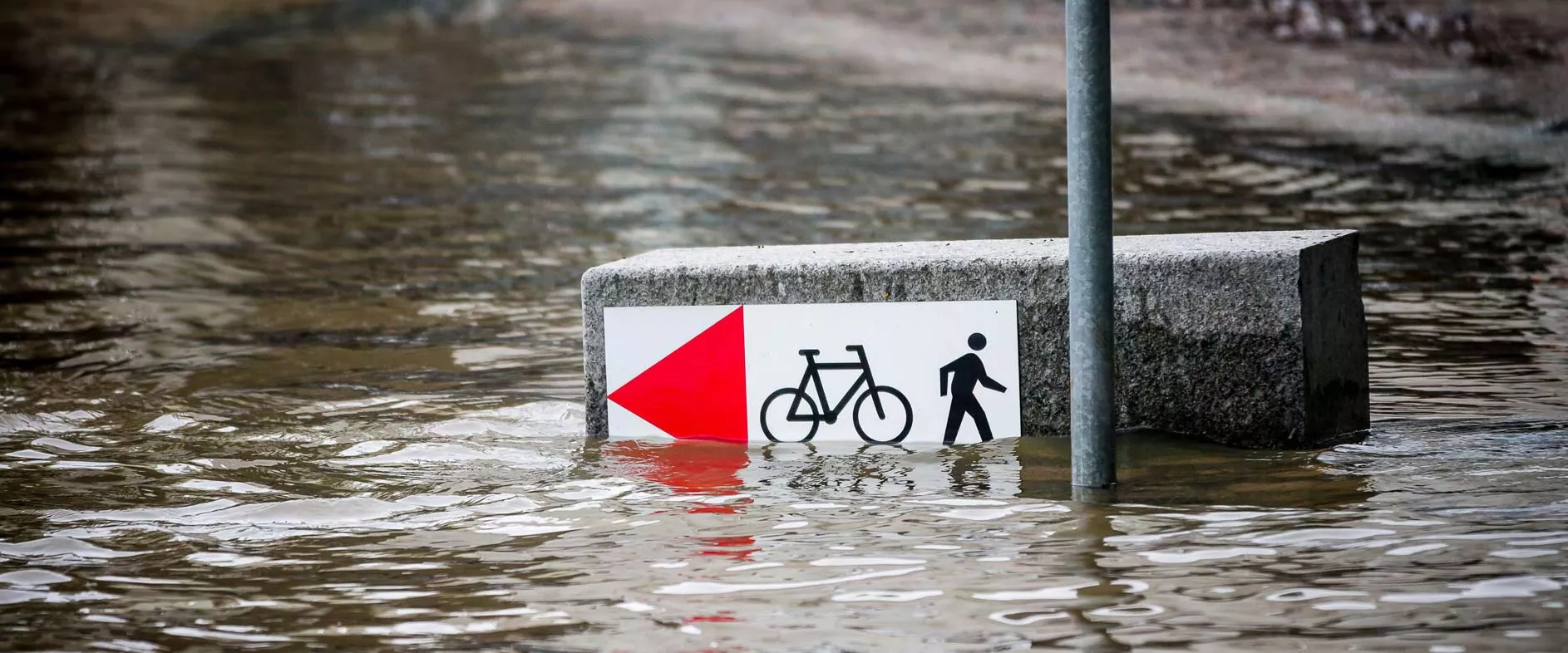
Preparing for heavy rain and flooding
To limit the impact of heavy rain and flooding, we’ve set up early warning systems in the field and developed an action plan to respond when these events affect the rail network.
Heavy rain, storms and flooding can have a powerful impact on railway infrastructure and train movements. These and other types of severe weather can flood our lines and cause mud- or landslides—and they’re becoming more frequent. To stay ahead of the consequences, we’ve set up surveillance systems that monitor precipitation and watercourse levels across our entire network at all times. We’ve also taken steps to protect our system based on the level of risk in each area.
Working in partnership with Météo France
Operations units at SNCF Réseau are in regular contact with Météo France forecasters to get the earliest possible warning when heavy rain and violent storms could disrupt rail service. Whenever severe weather is looming, bulletins go out to SNCF Réseau operations centres to stay ahead of the hazards that come with it.
TOUTATIS, the heavy rain alert system
To monitor the condition of our earthworks during heavy rain, we’ve developed Toutatis, a real-time rainfall surveillance system. When rainfall exceeds the threshold for a vulnerable site, Toutatis calls the maintenance technician on duty, who goes out to inspect it.
1 system, multiple advantages
- determine how much rain puts earthworks at risk and when it’s safe for trains to run
- trigger a rapid response through the control centre, which contacts the technician best positioned to take action on the ground
- make the system safer during severe weather while cutting maintenance costs
TOUTATIS, the alert system that monitors our lines for wet weather
PREDICT, the flood warning system
No matter how prepared we are, flooding can still affect our infrastructures and train service. We monitor them in real time with Predict, a Météo France subsidiary service that sets the rainfall alert thresholds for watercourses at each measuring station. This system processes information from Vigicrues, a government flood risk assessment service, and issues an alert when a watercourse exceeds the critical level. Predict also includes an online platform that displays all stations on alert. The system constantly evolves to improve its response to operational needs, based on regular follow-up sessions.
PREDICT, the flood warning system
Our action plan to deal with the aftermath
Heavy rain can leave rail infrastructure seriously damaged, with malfunctioning electrical equipment and mud- and landslides having a major impact on the network. Service may slow or even grind to a halt, depending on the degree of impact. That’s why it’s essential to have the right action plan in place to deal with the aftermath of heavy rain.
Before a flood
We may take one of several actions, depending on the gravity of the warning:
- preserve the most sensitive network components—signalling, switching and cable heads
- protect rolling stock
- create temporary dams or dikes
During a flood
When water rises, our priority is to:
- ensure continuity of service with the right transport plan
- clear and secure railway lines and the areas around them
- assist and inform passengers
After a flood
To resume rail service, we focus on:
- pumping water from infrastructures and drying them out
- setting up mobile signalling
- sending experts to inspect affected sites
- evacuating remaining water and cleaning the tracks, ballast, platforms, stations, warehouses, offices and other facilities
- confirming that signalling, catenaries, earthworks and track installations are all working well
- relaunching IT and telecommunications networks
- replacing equipment removed ahead of the flood
- running reconnaissance trains to deoxidize the rails before commercial traffic resumes
Share the article